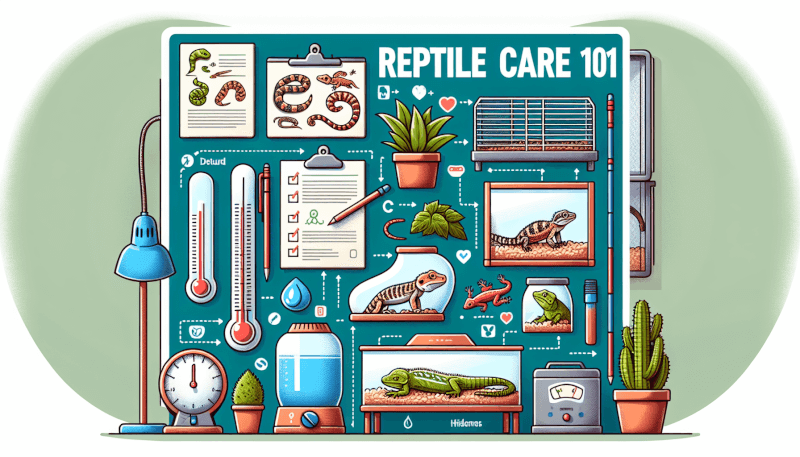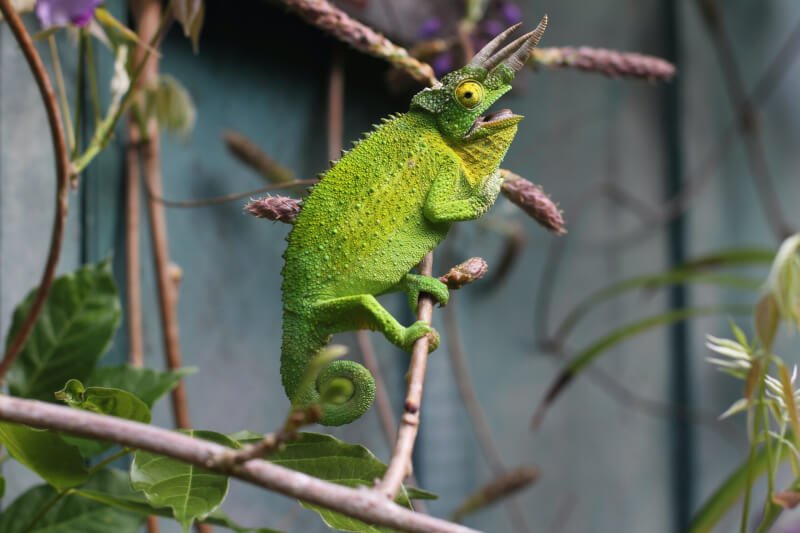If you’ve ever considered bringing a reptile into your home as a pet, it’s important to understand the key elements needed to create a reptile-friendly environment. From providing the right temperature and humidity levels to creating a suitable habitat, this article will guide you on how to make your home a welcoming and comfortable space for your scaly friend. With a few simple adjustments, you’ll be able to provide the ideal living conditions for your reptile and ensure they thrive in their new environment.
Choosing the Right Reptile
Research Different Reptile Species
When it comes to choosing a reptile as a pet, the first step is to thoroughly research different reptile species. Each species has its own unique characteristics, care requirements, and personalities. Take the time to learn about the specific needs and behaviors of various reptiles to determine which one is the best fit for you and your lifestyle.
Consider the Reptile’s Size and Needs
Once you have narrowed down your options, consider the size and needs of the reptile you are interested in. Some reptiles require large enclosures and ample space to roam, while others are more suited for smaller enclosures. Additionally, certain reptiles may have specific temperature and humidity requirements that need to be met in order for them to thrive. Understanding the specific needs of the reptile you choose will ensure that you can provide it with a suitable and comfortable environment.
Evaluate the Reptile’s Temperament
Reptiles, like any other animals, can have different temperaments. While some reptiles may be more docile and tolerant of handling, others may be more skittish or aggressive. It is important to assess the temperament of the reptile you are considering to ensure that it aligns with your expectations and comfort level. If you are a beginner or have children, it may be wise to choose a reptile with a more calm and easy-going temperament.
Creating the Proper Enclosure
Select an Appropriate Reptile Enclosure
After choosing the right reptile for you, the next step is to select an appropriate enclosure. The size and design of the enclosure should meet the specific needs of the reptile, providing enough space for movement and natural behaviors. Research the ideal enclosure dimensions for the reptile species you have chosen to ensure a comfortable and suitable living space.
Ensure Adequate Space and Climbing Opportunities
Reptiles, depending on their species, have different space and climbing needs. Some reptiles are arboreal and require vertical space for climbing, while others may be terrestrial and need more ground space to roam. Providing suitable climbing opportunities, such as branches or perches, will not only meet their behavioral needs but also promote their overall well-being and physical health.
Provide a Secure Lid or Cover
It is of utmost importance to provide a secure lid or cover for your reptile’s enclosure. Many reptiles are excellent escape artists and can easily find their way out of improperly secured enclosures. A secure lid or cover will prevent your reptile from escaping, keeping them safe and secure within their designated living space. Ensure that the lid or cover fits tightly and has proper ventilation to maintain a healthy airflow.

Setting up the Habitat
Create a Temperature Gradient
Maintaining a suitable temperature gradient within your reptile’s habitat is crucial for their overall health and well-being. Reptiles are ectothermic, meaning they rely on external heat sources to regulate their body temperature. By setting up a temperature gradient, you provide your reptile with the option to thermoregulate, moving between warmer and cooler areas as needed. Use heating pads or lamps to create different temperature zones within the enclosure, mimicking the reptile’s natural environment.
Maintain Optimal Humidity Levels
In addition to temperature, humidity levels play a vital role in a reptile’s health, especially for those from tropical or desert habitats. Research the specific humidity requirements of your reptile species and utilize appropriate methods to maintain optimal levels. This may include misting the enclosure with water, using a reptile-safe humidifier, or incorporating a water feature within the habitat.
Install Proper Lighting
Proper lighting is essential for reptile health and well-being, as it helps regulate their internal biological functions, such as digestion and vitamin synthesis. Provide a combination of UVA and UVB lighting to mimic the sun’s natural spectrum. UVB lighting is particularly important as it aids reptiles in the synthesis of vitamin D3, which is necessary for calcium metabolism and overall bone health. Ensure the lighting fixtures are positioned correctly within the enclosure to provide adequate coverage and photoperiod.
Furnishing the Reptile Enclosure
Choose Suitable Substrate Material
Selecting the right substrate material for your reptile’s enclosure is crucial for their comfort and health. Different reptiles have different substrate preferences, ranging from sand and soil to mulch or reptile carpet. Consider the natural habitat of the reptile species you have chosen and replicate it by choosing a suitable substrate. It is important to research the potential risks and benefits of each type of substrate to ensure the safety and well-being of your reptile.
Provide Hides and Caves
Reptiles, especially those that are nocturnal or tend to be shy, require hiding spots within their enclosure. These hideouts serve as a place for reptiles to retreat to and feel secure when they are stressed or seeking privacy. Provide a variety of hides and caves throughout the habitat, using materials like rocks, logs, or commercially available shelters. By offering hiding spots, you are creating a more natural and stress-free environment for your reptile.
Include Branches and Rocks
Adding branches and rocks to your reptile’s enclosure provides both aesthetic appeal and functional benefits. Reptiles, such as lizards and snakes, often enjoy climbing or perching on elevated surfaces. Incorporating branches and rocks not only enriches their environment but also encourages natural behaviors and exercise. Ensure that these additions are securely placed, allowing your reptile to safely explore and utilize them without the risk of injury.
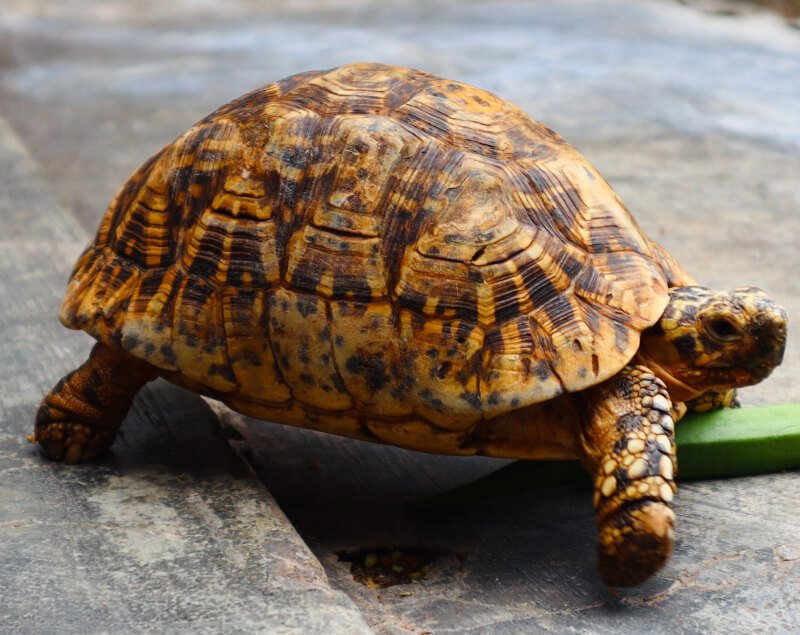
Maintaining Cleanliness and Hygiene
Remove Waste and Clean the Enclosure Regularly
Regular cleaning and maintenance of your reptile’s enclosure are essential for their health and well-being. Remove any waste, such as feces or shed skin, on a daily basis. Depending on the size of the enclosure and the reptile’s habits, spot-clean any soiled areas to prevent the buildup of bacteria or mold. Additionally, perform a thorough cleaning of the entire enclosure at regular intervals, using reptile-safe disinfectants or cleaners.
Disinfect and Sterilize Equipment
Along with cleaning the enclosure, it is equally important to regularly disinfect and sterilize any equipment or items used in your reptile’s habitat. This includes feeding dishes, water bowls, hides, and any other accessories. By regularly cleaning and sterilizing these items, you minimize the risk of bacteria or parasites contaminating your reptile’s environment.
Prevent and Treat Parasites
Parasites can pose a significant risk to the health of your reptile. Regularly inspect your reptile for any signs of parasites, such as ticks, mites, or worms. If you suspect or identify a parasite infestation, consult a reptile veterinarian for proper diagnosis and treatment. Additionally, practice preventative measures, such as quarantining new reptiles, to minimize the risk of introducing parasites to your established reptile collection.
Feeding and Nutrition
Research the Reptile’s Dietary Requirements
Each reptile species has specific dietary requirements, including the types and quantities of food they need to thrive. Research and understand the dietary needs of your chosen reptile species to ensure you are providing a balanced and nutritious diet. Some reptiles are herbivores, while others are carnivores or omnivores. It is essential to replicate their natural diet as closely as possible to promote their overall health and vitality.
Provide a Balanced and Varied Diet
To ensure your reptile receives all the necessary nutrients, provide a balanced and varied diet. Offer a range of appropriate food items, such as live or frozen prey, fresh fruits and vegetables, and commercially formulated reptile diets. The variety in their diet helps prevent nutritional deficiencies and encourages natural foraging behaviors. It is important to feed your reptile the appropriate amount, taking into account their age, size, and activity level.
Supplement with Vitamins and Minerals
In some cases, reptiles may require additional supplementation to meet their nutritional needs fully. This is especially true for reptiles that are unable to receive necessary vitamins and minerals from their diet alone. Research the specific supplementation requirements of your chosen reptile species and use reptile-safe supplements to ensure they are getting the essential nutrients they need for optimal health.
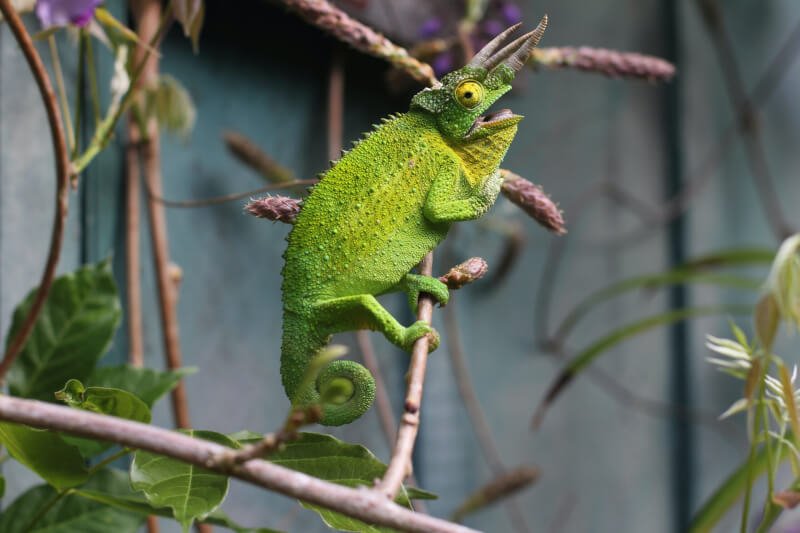
Monitoring and Maintaining Health
Regular Veterinary Check-ups
Just like any other pet, it is important to take your reptile for regular veterinary check-ups. Reptiles can be prone to various health issues, and regular examinations can help detect any potential problems early on. Find a veterinarian who specializes in reptile care and schedule routine check-ups to ensure your pet’s health is monitored and any issues are addressed promptly.
Recognize and Address Signs of Illness
As a responsible reptile owner, it is crucial to be knowledgeable about the signs of illness or distress in your pet. Common signs of illness in reptiles include changes in appetite, lethargy, unusual feces, weight loss, or visible skin abnormalities. If you notice any concerning symptoms, consult a reptile veterinarian immediately to receive proper diagnosis and treatment.
Maintain Proper Hygiene to Prevent Disease
Maintaining proper hygiene not only ensures the health of your reptile but also helps prevent the spread of diseases. Wash your hands thoroughly before and after handling your reptile to reduce the risk of transferring any potential pathogens. Additionally, practice good husbandry techniques, such as regularly cleaning and disinfecting the enclosure and equipment, to minimize the risk of infectious diseases.
Ensuring Safety and Security
Keep Reptiles Away from Other Pets
When keeping reptiles as pets, it is essential to ensure their safety by keeping them separate from other household pets. Reptiles and other pets may not interact well or may pose a threat to each other’s safety. Keep reptiles in designated areas or enclosures where they cannot come into contact with other animals, reducing the risk of potential injuries or stress.
Secure the Reptile Enclosure from Escapes
Reptiles are skillful escape artists, and it is important to take measures to prevent any potential escapes. Ensure that the enclosure is securely locked or fastened, with no gaps or openings that the reptile can exploit. Regularly inspect the enclosure for any weaknesses or areas that may need reinforcement. By ensuring the security of the enclosure, you can prevent the reptile from venturing into unsafe areas within your home or becoming lost.
Use Caution When Handling Reptiles
When handling reptiles, it is important to exercise caution and respect their boundaries. Not all reptiles enjoy being handled, and some may exhibit defensive behaviors if they feel threatened or uncomfortable. Research the proper handling techniques for your chosen reptile species and approach them with care and gentleness. If you are unsure about handling or have concerns about safety, consult a reptile expert or veterinarian for guidance.
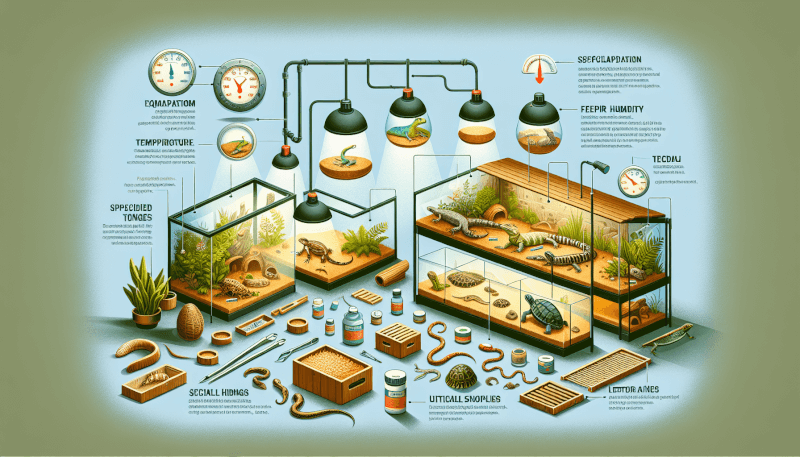
Creating a Suitable Environment for Breeding
Research Breeding Requirements for the Reptile Species
If you are interested in breeding reptiles, it is essential to thoroughly research the specific breeding requirements for your chosen species. Different reptiles have unique reproductive behaviors and environmental needs. Understanding these requirements and providing the suitable conditions, such as temperature cycles or specific nesting materials, will increase the chances of successful breeding and reproduction.
Provide Suitable Nesting and Egg-laying Areas
Reptiles lay eggs in specific areas that provide the necessary temperature and humidity conditions for successful incubation. Research the nesting and egg-laying habits of your chosen reptile species and provide suitable areas within their enclosure. This may include providing nesting boxes, creating designated egg-laying sites, or utilizing specialized incubation setups. By creating these appropriate environments, you facilitate the natural reproductive processes of your reptiles.
Maintain Proper Environmental Conditions
Maintaining consistent and appropriate environmental conditions is crucial for successful reptile breeding. This includes ensuring the proper temperature and humidity levels, as well as providing suitable lighting and substrate. Regular monitoring and adjustments will help create the optimal conditions for breeding, encouraging natural behaviors and increasing the likelihood of successful reproduction.
Educating Yourself and Others
Join Reptile Enthusiast Groups or Clubs
One of the best ways to further enhance your knowledge and passion for reptiles is by joining reptile enthusiast groups or clubs. These communities offer a wealth of information and resources, allowing you to connect with experienced reptile keepers and enthusiasts. You can share experiences, seek advice, and learn from others who have a deep understanding and appreciation for reptiles.
Attend Reptile Expos and Workshops
Reptile expos and workshops are excellent opportunities to expand your reptile knowledge and interact with experts in the field. These events feature a wide variety of reptile species, knowledgeable vendors, and informative workshops. By attending such events, you can learn about new trends, discover innovative products, and stay up to date with the latest research and care practices.
Share Knowledge and Encourage Responsible Reptile Ownership
As a responsible reptile owner, you have the opportunity to share your knowledge and experiences with others. Educate family members, friends, and fellow reptile enthusiasts about responsible reptile ownership by sharing your own experiences and tips. Encourage proper care and husbandry practices, emphasize the importance of research and education, and promote the conservation of reptile species in their natural habitats. By spreading awareness and knowledge, you can inspire others to provide the best possible care for their reptile pets.
In conclusion, creating a reptile-friendly environment in your home involves careful consideration of your reptile’s needs and behaviors. Through thorough research, proper enclosure setup, appropriate feeding and nutrition, regular monitoring of health, and continuous education, you can provide a happy and healthy life for your reptile companion. Remember, responsible reptile ownership not only benefits the well-being of the reptile but also contributes to the overall conservation and appreciation of these incredible creatures.
